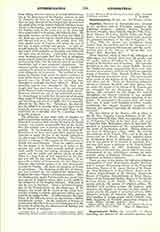

Superior, Diocese of (SUPERIORENSIS), situated in the northern part of Wisconsin, comprises the following counties: Ashland, Barron, Bayfield, Burnett, Douglas, Iron, Lincoln, Oneida, Polk, Price, Rusk, Sawyer, St. Croix, Taylor, Vilas, and Washburn. In area it covers 15,715 square miles, and has its episcopal residence in the city of Superior. On May 3, 1905, the diocese was established, being formed from the northern part of the Diocese of La Crosse (see Diocese of La Crosse) and the northwestern part of the Diocese of Green Bay (see Diocese of Green Bay).
When Superior, which is one of the suffragans of Milwaukee, was formed, there were 39 secular and 17 regular priests attending to the needs of the people in 93 churches and 33 stations. The Catholic population at the time was about 38,000. Besides the English-speaking congregations there were then as there are at present churches in which the spiritual wants of Germans, Poles, French, Italians, Slovaks and Bohemians were looked after. The spiritual and other needs of the Indians of the district have been well taken care of. There are flourishing industrial schools at Odonah, Bayfield, and other places, that are under the charge of the Sisters of St. Francis and are attended by the Franciscan Fathers. The bishop, ably seconded by his clergy, has started throughout the diocese wherever it was possible parochial schools for the Christian education of the young. In consequence the various cities and towns have one or more such bringing excellent results, considering the meagre resources available. At Superior and Ashland especially the schools are well attended.
The first bishop of the diocese, still in office, is the Rt. Rev. Augustin Francis Schinner, D. D. He was consecrated July 25, 1905, and appointed to the see of Superior May 13 of the same year. He came to Superior from Milwaukee, where he had held the position of administrator of the archdiocese after the death of Archbishop Katzer. Bishop Schinner was born in Milwaukee May 1, 1863. He entered the seminary at St. Francis, Wis., and at the age of twenty-two on March 7, 1886, was ordained priest by Archbishop Heiss of Milwaukee. For about a year he was pastor of the Church at Richfield, Wis., and was then made a professor at St. Francis Seminary, Milwaukee. In 1891 Archbishop Katzer selected him as his secretary, and in 1895 he was made vicar-general of the archdiocese, holding the same position under Archbishop Messmer, until his appointment as Bishop of Superior.
There are now in the diocese the following religious communities of men: Franciscans, Jesuits, Servites; and of women: Franciscan Sisters of the Perpetual Adoration, Sisters of St. Agnes, Sisters of St. Dominic, Poor Handmaids of Jesus Christ, Sisters of St. Francis, School-Sisters of St. Francis, Franciscan Sisters of Charity, School-Sisters of Notre Dame, Sisters of the Sorrowful Mother, Sisters of the Divine Savior, Sisters of St. Joseph. There are (1911): secular priests, 56; priests of religious orders, 23; churches with resident priests, 55; missions with churches, 65; chapels, 8; stations, 23; high school, 1; parish schools, 23; pupils of parochial schools, 4869; industrial schools, 2; inmates, 225; orphans, 45; total number of young people under Catholic care, 5094; hospitals, 5; Catholic population (Census of 1010): White, 48,028; Indians, 3015.
JOHN J. DRISCOLL

